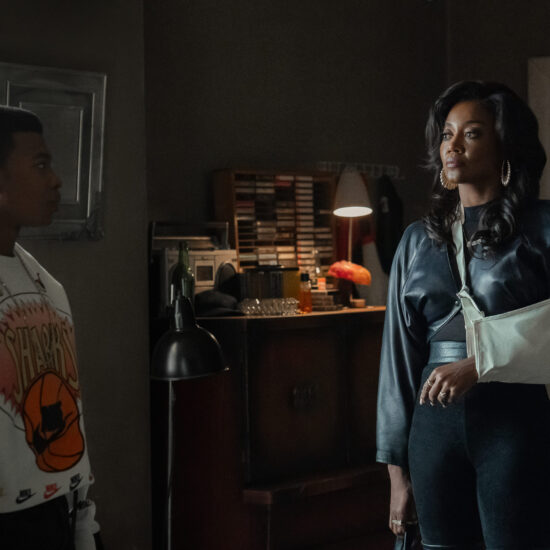
As photographers and Cinematographers, the power to capture and tell stories with our images is essential, and to do so we need to master some important concepts that will always come in handy in every job. The concept that we will study today is dynamic range.
By understanding and mastering the concept of dynamic range, we can learn how to properly expose every scene and get more information out of every camera sensor we will ever work with.
Let’s dive right into it!
What Is Dynamic Range
Dynamic range in digital sensors is defined as the range of signals from the strongest signal to the weakest signal. The difference between the photonic and/or electronic noise in the system with no signal present and the maximum signal the system can record without clipping or distorting the signal is considered to be the dynamic range of the sensor.
In more simple words, the dynamic range measures how well a camera can accurately record and display variations in brightness levels. High dynamic range means that there is more available detail in both bright and dark areas of an image. With low dynamic range, details get lost when they become too bright or too dark for the camera’s sensors to accurately record them.
This ratio is usually measured in f-stops of latitude.
Usually, the smaller a sensor of a camera, the lower the dynamic range of the camera will be. With such sensors, it is more difficult to properly expose the highlights and shadows. On the other hand, cameras that have bigger sensors can retain more easily information in the shadows and highlights.
As a photographer, it is essential to understand the importance of dynamic range since it will help to produce more accurate images with more depth and detail and as a Cinematographer, understanding this concept will help you adjust the exposure for different scenarios (as we will see later on).
Video dynamic range vs Film Dynamic Range
From the early days of film on into the digital era, photographers have been challenged by their camera’s inability to record the scene as their eyes see it. Those who were able to master the limitations of the camera learned to “see” as the camera sees and take better pictures.
However, for the large population of amateurs and serious hobbyists, many images continued to be a disappointment, with flowers and landscapes lost in murky shadows, and washed-out skies
that lacked the blue so vividly remembered.
Human vision is capable of sensing up to 30 stops of light. A dynamic range of such magnitude cannot be recorded by any current photographic device except by integrating numerous successive bracketed exposures.
The resulting high dynamic range (HDR) image can be contained in a 32-bit floating point file that preserves the values of the original scene ranging from the darkest darks to the brightest highlights, all with full detail.
Modern color negative films are capable of recording between 14 and 15 stops of latitude.

Both Film and Digital cameras can only pick up a limited portion of the dynamic range that human eyes would.

This simply means that something we perceive as a very light gray in a scene, will be then recorded by the camera as pure white, since that level of brightness is not seen by the camera.
Vice versa, if we perceive something as dark gray, it will most likely be recorded as pure black because the camera doesn’t have a high enough dynamic range to see that specific tone.

One of the benefits of shooting in film rather than digital is the quality of the dynamic range. By this, I mean that if we were to overexpose a scene shot in film by 3 or 4 stops, we would be able to recover all the information in post-production with minimal to no loss of information.
When we shoot in digital, we have a flexibility that goes to 1 to 2 stops max and we don’t have any certainty that we will recover that information in post-production.
That’s why, every time a film is shot in film, the Director of Photography decides to overexpose 1 stop the negative.
Relationship between Dynamic Range and ISO
The dynamic range of a camera is not something that we can change, but what we can do is adjust other settings in the camera to change the values of the dynamic range. This will all make more sense shortly but before we have to understand what is ISO.
What is the ISO?
ISO (which stands for International Standards Organization) is a number that represents the sensitivity of light for a specific film stock or digital camera. In detail, it means how much light we needed to produce a good image.

Obviously, it is always possible to shoot a scene in very low light conditions and then try to fix it in post-production, but the result you will get is most likely be with a lot of noise, low resolution and with very unusual contrast ratios.
Every camera has what’s called a native ISO. It represents the perfect parameter for the sensor for the camera to expose at without having any alterations such as gain. It is basically just the amount of exposure that fills the photosites, without over or underfilling them.
One important note when it comes to measuring ISO, is that 1 stop of light equals double the amount of ISO. So, for example, let’s say that we have an ISO at 800. If we want to gain 1 stop of light we can either open the aperture of 1 stop or increase the ISO to double the amount we have so in this case, 1600.
Dynamic Range and ISO
Now that we understand how ISO works, we can finally understand how it works in relationship with Dynamic Range.
To explain this concept, let’s take as an example the dynamic range of an Alexa Mini which has 14 stops.
Changing the ISO in the camera doesn’t change the dynamic range. It is 14 stops and it will remain 14 stops. What we can decide is where this dynamic range falls.
We can see the chart down to understand better this concept.

As you can see in the chart, changing the ISO doesn’t affect where the dynamic range fall. This might sound a little bit strange and backward, but if we increase the ISO we would get more information in the HIGHLIGHTS and vice versa, if we decrease the ISO we would protect more the SHADOWS.
If we, for example, are shooting in a living room and sunlight is coming in from a window, the first thing we might do is lowering the ISO, but doing the opposite would protect the highlights more, as we saw in the image above. What we can do to avoid it clipping is to add an ND filter.
This is very important to understand since it can really help you in post-production to actually adjust and change any information in the shadows or highlights.
Conclusion
In conclusion, dynamic range is a very powerful tool to understand and I hope that this article will make you experiment in your shoots with different ISO to see firsthand what we discussed in this article.
If you have any questions, feel free to comment below and I will be more than happy to reply!
Matteo Martignago is a Gaffer and Director of Photography based in Los Angeles. He has recently founded ArtisticHive which is an educational company and go-to resource for helping today’s artists and creators to build and grow their careers or simply start a new creative journey.















